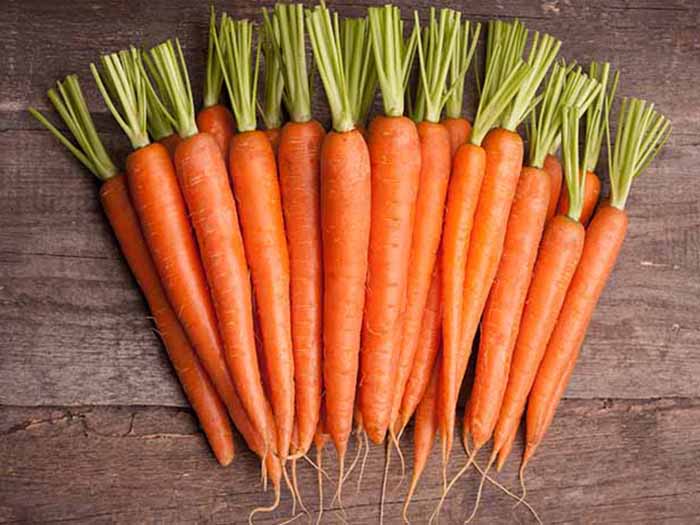To lower the cholesterol and fat levels in what you eat, follow the following tips when you are cooking.
A good number of your preferred recipes can be made healthier simply by substituting ingredients with lower levels of fat. Go through the list of ingredients in your recipe. Then, look at the table below to check if any of the ingredients are listed in the left column. In that case, you can make the recipe a healthier one using the ingredient in the right column instead.
What Should I Substitute?
As an alternative to: Whole eggs, egg yolks – Use: Egg whites or ¼ cup egg substitute
In place of: Butter – Use: Liquid or tub margarine, unsaturated vegetable oils, butter-flavored granules, herbs and spices to flavor food
Rather than: Mayonnaise – Use: Non-fat yogurt, mustard, low-fat or non-fat mayonnaise
Rather than: Regular yogurt, sour cream – Use: Non-fat yogurt, non-fat sour cream
Instead of: Potato chips – Use: Pretzels, low-fat or baked chips
Rather than: Whole or 2% milk – Use: Skim or 1% milk
In place of: Whole-milk ice cream – Use: Ice milk, low-fat frozen yogurt, low-fat or non-fat ice cream, sorbet
As an alternative to: Whole-milk cheese – Use: Reduced-fat, low-fat, or non-fat cheese
Rather than: Whole-milk sour cream – Use: Non-fat or low-fat sour cream or yogurt
As an alternative to: Coconut oil, palm oil, palm kernel oil – Use: Unsaturated oils, such as safflower, sunflower, canola, and olive oil
As an alternative to: Regular salad dressings – Use: Low-fat or non-fat salad dressings, vinegar
Use Less Fat in Recipes
If a recipe needs 1 cup of butter, use ½ cup of butter and replace the other half with 1/4 cup of prune puree. You can make prune puree by pureeing 1 1/3 cups of pitted prunes and 6 tablespoons of hot water in a blender or mixer. This makes one cup of puree. For baked goods, it is possible to replace 1 cup of butter, oil, margarine, or shortening with 1 cup of applesauce and still have a moist, great-tasting item without the same high content of fat and calories.

Carrots help to lower cholesterol levels. Photo Credit: Shutterstock
Tips for the Healthiest Cooking Methods
-Bake, broil, roast, steam, microwave, poach, grill or stir-fry with only a small amount of oil.
-Use non-stick pans.
-Spray a light coating of vegetable oil instead of liquid oil or butter, or cook with defatted broth, bouillon, fruit juices, or wine.
-Thicken sauces and soups with skim or 1% milk and a little flour or cornstarch as an alternative to whole-milk products.
-Once or twice per week, substitute non-animal sources of protein, such as tofu, beans, peas, or lentils, rather than animal proteins. This could take some getting used to if you are a so-called meat-and-potatoes man. If this sounds new for you, evaluate a few vegetarian cookbooks or magazines to get ideas for preparation methods and spices.
Make Gradual Changes
Over time, you’ll get used to your new meals, and your tastes will change. Adding more vegetables could also raise your dietary fiber, which helps reduce your LDL (bad) cholesterol.
Dietary Fiber Sources
Good dietary fiber sources include oats, oranges, pears, Brussels sprouts, carrots, dried peas and beans
You can choose healthy foods and then without realizing it add unhealthy ingredients if you aren’t wise about how you add flavor. Use herbs instead of butter or margarine, or utilize a little unsaturated vegetable oil. Many cookbooks have lists of herbs that enhance the flavor of foods. Try one or two. You’re apt to discover some new flavors that you like. Try basil on zucchini, for example. Or use lemon pepper on broccoli.
Advantages of Homemade Food
Furthermore, many times, homemade food tastes better too! The true secret is that it is usually healthier for you. Use fewer prepackaged foods. Prepackaged sauces and mixes, as well as instant products, such as instant rice, pasta meals, and instant cereals, often contain fat. It may seem less convenient at first, but try recipes for rice dishes from low-fat cookbooks or magazines.
Soon, you’ll have a few recipes memorized. This will make it simple for you to make dishes in fresher, healthier ways making use of your own mixes of spices. You might also be very impressed at how little time other homemade dishes that don’t rely on a package actually take to prepare.
If you cannot bring your LDL (bad cholesterol) down to a good level by reducing the amount of fat and cholesterol you consume, try this. Add food products such as margarine and salad dressings that reduce cholesterol.
Low-cholesterol Recipe
Marinated Barbequed Vegetables
Ingredients:
1 small eggplant, cut into 3/4 inch thick slices
2 small red sweet peppers, seeded and cut into wide strips
3 zucchinis, sliced
6 fresh mushrooms, stems removed
1/4 cup extra virgin olive oil
1/4 cup freshly squeezed lemon juice
1/4 cup coarsely chopped fresh basil
2 cloves garlic, peeled and minced
Directions:
Place eggplant, red sweet peppers, zucchinis, and fresh mushrooms in a medium bowl.
In a medium bowl, whisk together extra virgin olive oil, freshly squeezed lemon juice, basil, and garlic. Pour the
mixture over the vegetables, cover and marinate in the refrigerator for at least 1 hour.
Preheat an outdoor grill for high heat.
Place vegetables directly on the grill or on skewers. Cook on the prepared grill two to three
minutes per side, brushing frequently with the marinade, or until desired doneness.
The Author – Georgia Rascon writes for the low cholesterol dessert recipes blog, her personal hobby web log centered on guidelines to eat healthy to stop high cholesterol.
Author’s Note: The info provided on this document are made to support, not replace, the relationship that exists between a patient/site visitor and his/her doctor. Georgia Rascon has no business intent and does not accept direct source of promotion coming from health or pharmaceutical businesses, doctors, clinics, and websites. All content supplied by her is based on her editorial judgment and it is not driven by an advertising purpose.
